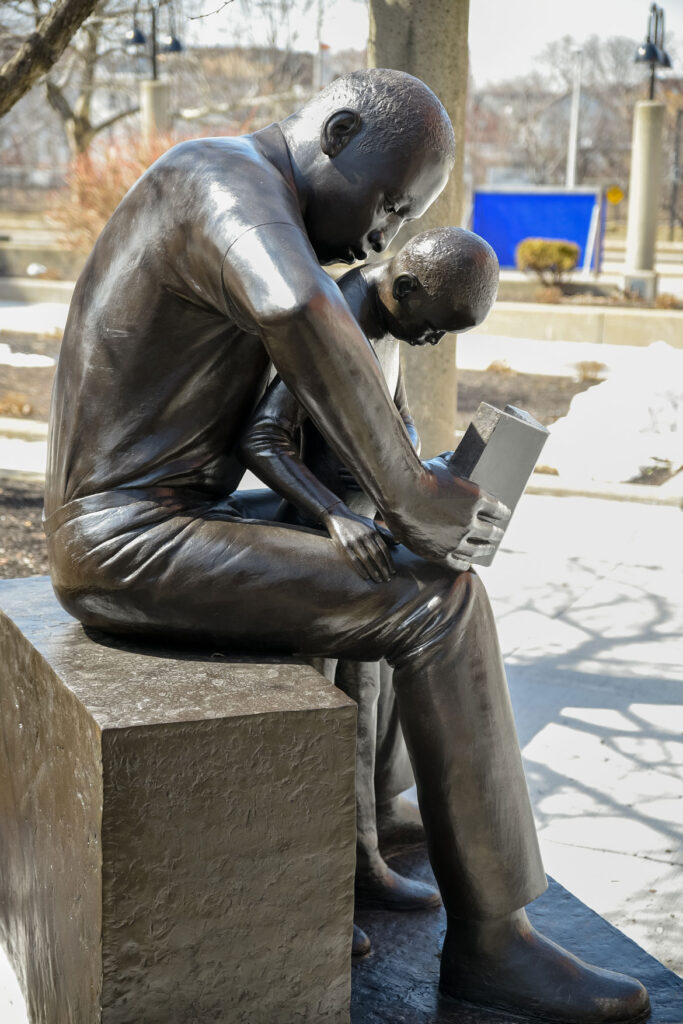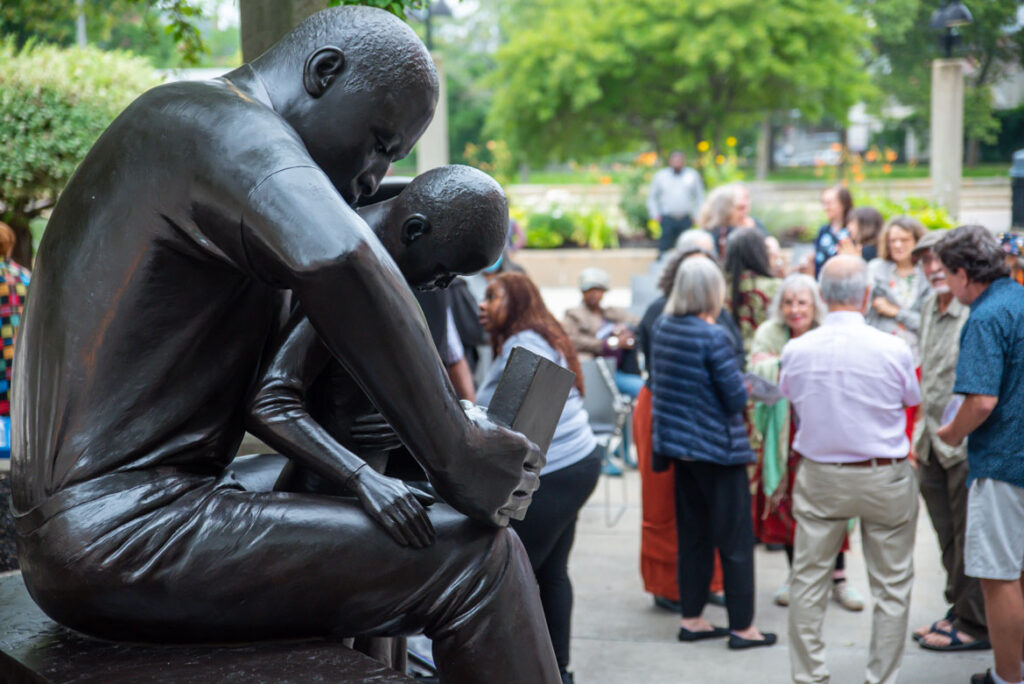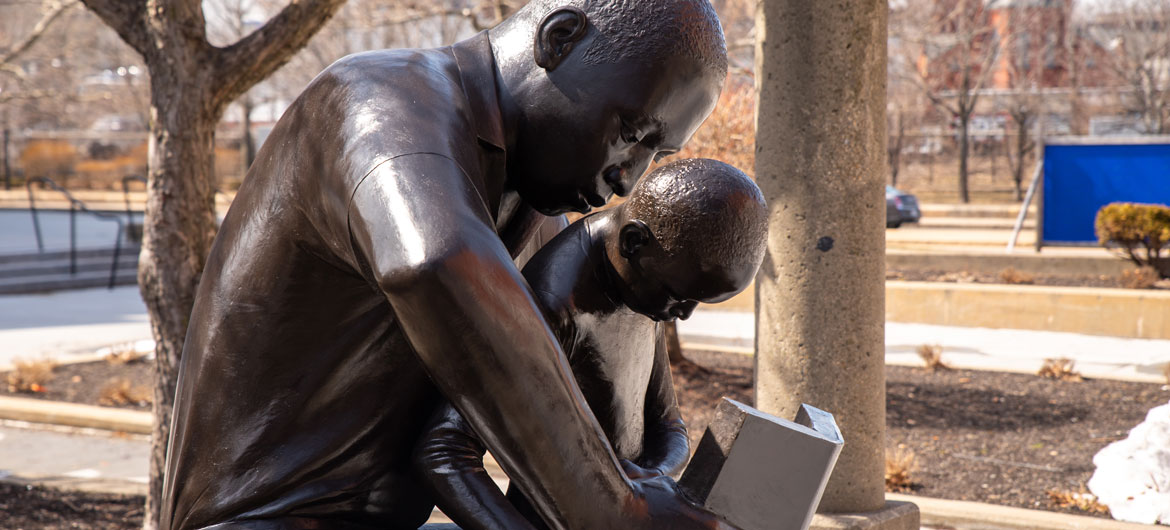“In Western art, it is common to have the theme of the mother and child but the theme of male bonding is much less common,” Edmund Barry Gaither, director and curator of Boston’s Museum of the National Center for Afro-American Artists, said at a rededication ceremony for John Wilson’s statue “Father and Child” at Roxbury Community College on July 13. “When male bonding pops up as a theme it is typically is around sports and war. It is rarely around tenderness.”
Roxbury native Wilson (1922-2015) created the 7-foot-high sculpture of a seated man and child reading a book, inspired by his 1960s print, “Father and Child Reading.” Originally created in 1990, the artwork sits in the college’s Courtyard 1 between Building 1 and Building 2.
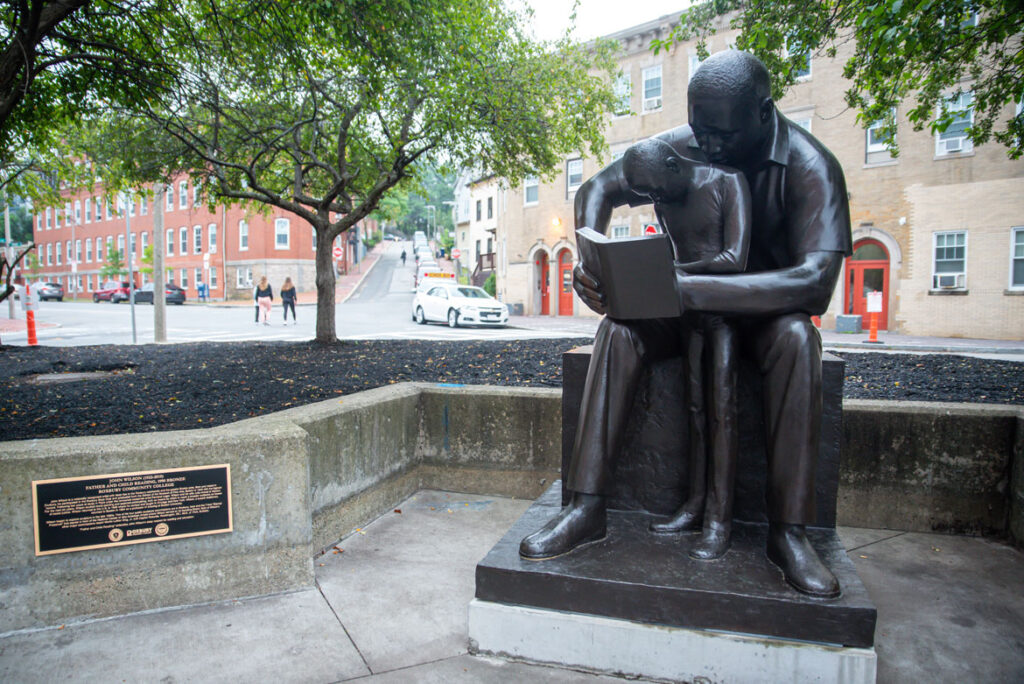
John Wilson was born in Roxbury, Massachusetts, in 1922. His parents came from British Guiana. He won a scholarship to study at Boston’s School of the Museum of Fine Arts, from which he graduated in 1945, before earning a bachelor’s degree in education from Tufts University in 1947. With a traveling fellowship from the MFA, he studied with artist Fernand Léger in Paris, then in Mexico City on another fellowship.
His art described Black life, spurred by an absence he found at Boston’s Museum of Fine Arts when he was growing up. “None of these people looked like me and just by omission the implication was that Black people were not capable of being beautiful and true and precious,” Wilson told The Boston Globe in 1995, when an exhibition of his own art opened at the MFA. “So there’s some satisfaction in getting these things in the museum at this point.”
“I am a Black artist. I’m a Black person,” Wilson told the Globe. “To me my experience as a Black person has given me a special way of looking at the world and a special identity with others who experience some injustices. … I grew up in a world that said I could be killed if I stepped out of line. … There is a core of anger and frustration I have to vent.”
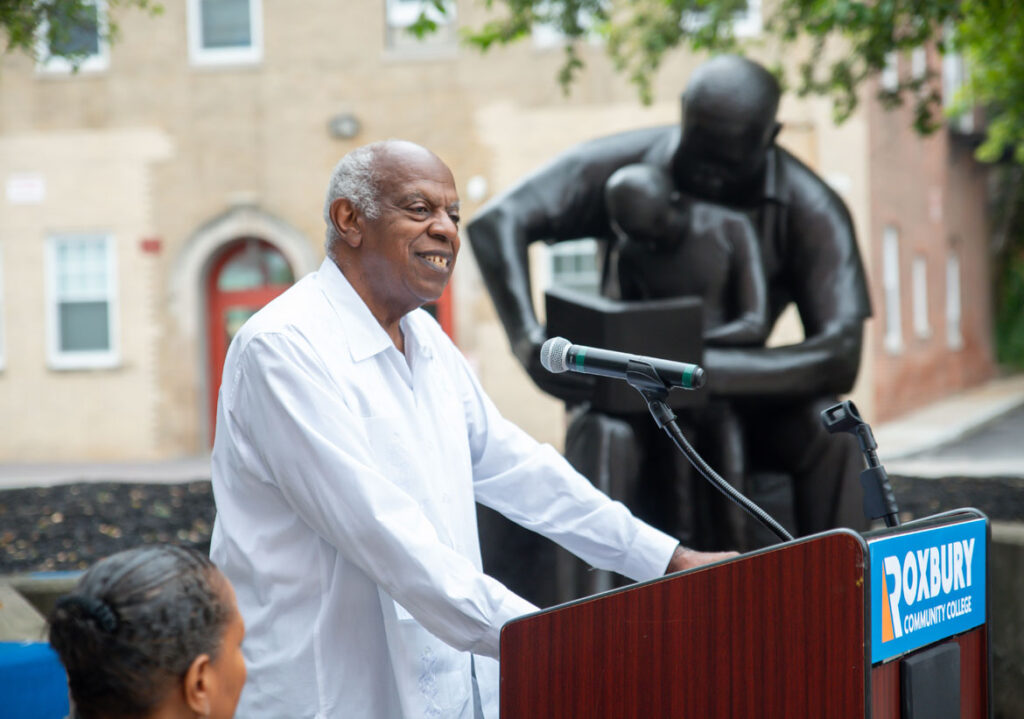
Wilson drew lithographs for unions in Chicago and taught in New York, before becoming a professor of art at Boston University from 1964 to 1986. He began living in a home-studio in Brookline in the 1960s.
“I like relating to people and getting the sense of what a person is about through this head, which is the focus of personality and how you get to recognize a person,” Wilson told the Globe in 1995. “This business of head as the source of your thoughts and feelings interests me. I’m not simply trying to make a likeness of an individual. I’m trying to use the head as a metaphor of what human beings are about.”
Wilson sculpted “Eternal Presence,” the monumental, 8-foot-tall bronze head that stands in front of the Museum of the National Center of Afro-American Artists in Roxbury.
“I want them to be images that can’t be dismissed. I want them to confront people. I want to create something that can’t be camouflaged into some background,” Wilson told the Globe in 1995.
Wilson is perhaps best known for creating the 3-foot-tall bronze bust of Martin Luther King Jr. for the Capitol Rotunda in Washington, D.C., in 1986.
“I wanted people to recognize him but also I wanted to suggest the intangible energy and strength, this sense of dogged strength he had that allowed him to carry out these impossible campaigns,” Wilson told the Globe in 1996. “He was able to use his verbal skills to convince masses of ordinary people to do these extraordinary things. … All of that is what I’m trying to put into a head.”
Wilson told the Globe in 1986: “I hope the sculpture will stimulate people to learn more about King, to perpetuate his struggle.”
If this is the kind of coverage of arts, nature, cultures and activisms you appreciate, please support Wonderland by contributing to Wonderland on Patreon. And sign up for our free, (hopefully) weekly newsletter so that you don’t miss any of our reporting. (All content ©Greg Cook 2021 or the respective creators.)

